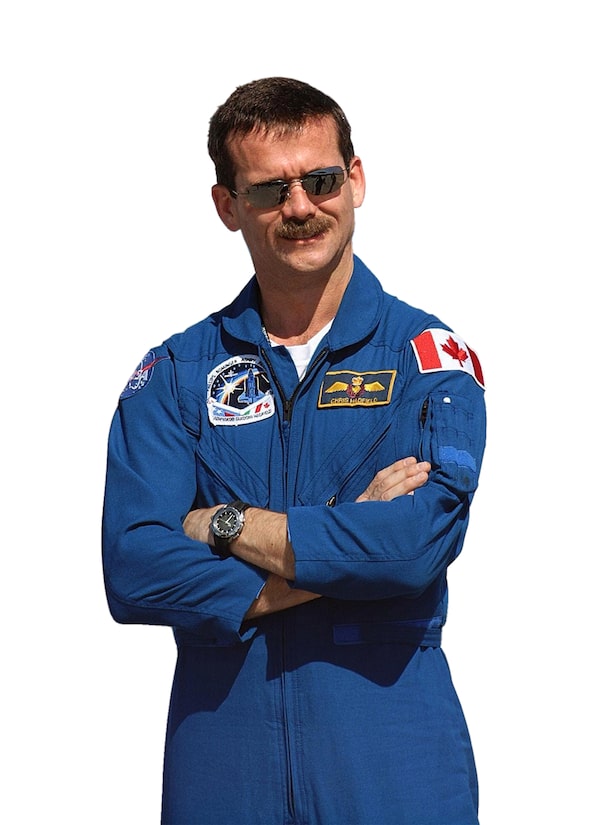
ALLISON DINNER/Reuters
Canada’s favourite astronaut has been perched at the top of the pyramid for his entire career. Even after giving up his wings, he’s still up there—Hadfield’s first novel, the space-based spy thriller The Apollo Murders, was a bestseller, and his new follow-up, The Defector, looks to be a hit as well.
Look up, way up
Hadfield started dreaming of space on July 20, 1969, when he watched Neil Armstrong walk on the moon. At the time, NASA only accepted American candidates, but that didn’t deter young Chris. As he wrote in his memoir, An Astronaut’s Guide to Life on Earth: “I had to imagine what an astronaut might do if he were nine years old, then do the exact same thing. Would an astronaut eat his vegetables or have potato chips instead? Sleep in late or get up early to read a book?” That single-mindedness took him from gliders to fighter jets to the International Space Station, and even to the top of the bestseller list.
Bring your ego
In his 1979 masterwork The Right Stuff, Tom Wolfe describes the pilot’s ego as “so big, it’s breathtaking!” How else to believe—no, to know with absolute certainty—that you’re capable of pushing yourself and a multimillion-dollar machine to the limit, and being willing to risk death to prove it? The general rule is that the faster and more dangerous the machine, the bigger the ego—and Hadfield made it to test pilot, the most envelope-pushing pilot gig there is. Then he got chosen as an astronaut, joining the 0.000007% of humans who’ve orbited the Earth. The man’s got swagger, and he brings it to everything he does, whether he’s flying or writing historical thrillers.
Work the problem
When you’re hurtling through the air at Mach 1.5 or orbiting the Earth at Mach 22, there’s zero margin for error, and even less for panic. Elite flyers are trained to calmly work a problem, which Hadfield describes as NASA-speak for “methodically looking for a solution until you run out of oxygen”—or, better yet, solve it. But overcoming your body’s natural fight-or-flight response only comes with relentless preparation. When fire alarms blared Hadfield and his crewmates awake on the ISS, he writes, “I doubt anyone’s heart rate increased by more than a beat or two”—clearheadedness borne from knowing in your bones you’re capable of dealing with anything.
Aim to be a zero
One of Hadfield’s key maxims goes like this: Minus-one personality types actively create problems. Zeroes are neutral—”You’re competent enough not to create problems or make more work for everyone else.” A plus-one, adds value to any situation. This is, of course, the sweet spot. But the key is not to brag about it (only a minus-one would do so). Just be quietly capable; it won’t go unnoticed.
Choose the right co-pilot
Hadfield describes his wife of 40-plus years, Helene, as a “highly driven, take-charge overachiever.” (Who says opposites attract?) Nobody gets to the tip-top of the pyramid—be it in business or flying—without an “intimidatingly capable” partner backing you up. Hadfield knows it and credits Helene—openly and often—with getting him there.
Your time is valuable. Have the Top Business Headlines newsletter conveniently delivered to your inbox in the morning or evening. Sign up today.